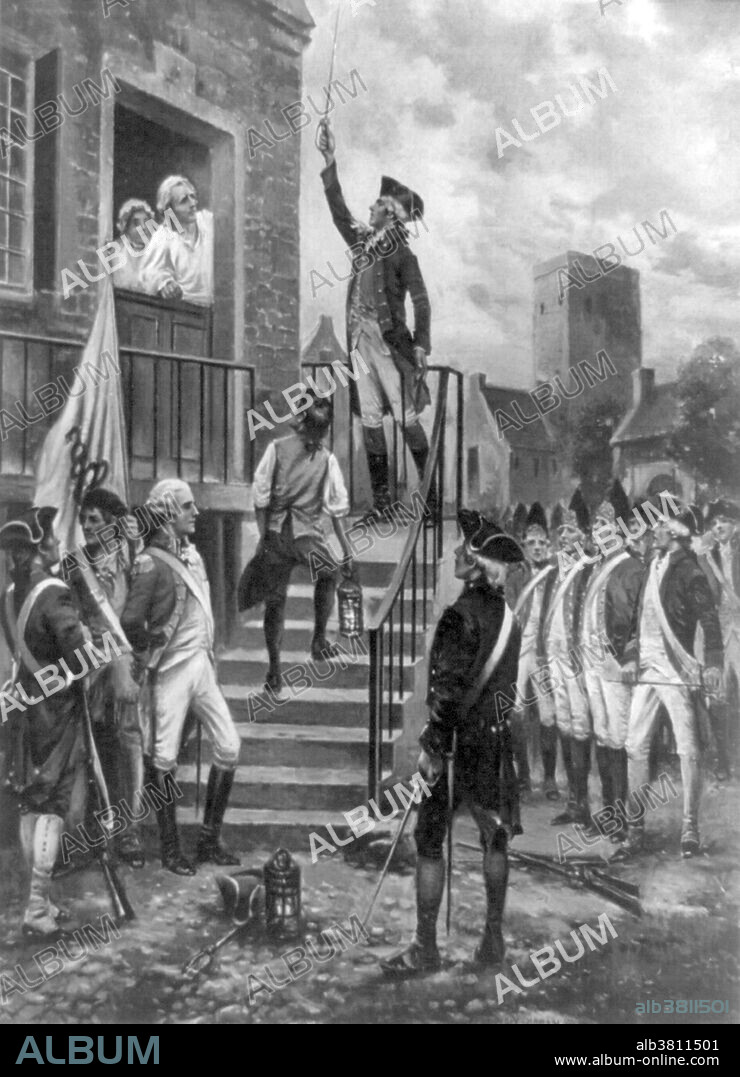alb3811501
Capture of Fort Ticonderoga, 1775

|
Añadir a otro lightbox |
|
Añadir a otro lightbox |



¿Ya tienes cuenta? Iniciar sesión
¿No tienes cuenta? Regístrate
Compra esta imagen

Título:
Capture of Fort Ticonderoga, 1775
Descripción:
Ver traducción automática
The Capture of Fort Ticonderoga occurred during the American Revolutionary War on May 10, 1775, when a small force of Green Mountain Boys led by Ethan Allen and Colonel Benedict Arnold overcame a British garrison at the fort and looted the personal belongings of the garrison. Cannons and other armaments from the fort were transported to Boston and used to fortify Dorchester Heights and break the standoff at the Siege of Boston. After seizing Ticonderoga, a small detachment captured the nearby Fort Crown Point on May 11. Seven days later, Arnold and 50 men boldly raided Fort Saint-Jean on the Richelieu River in southern Quebec, seizing military supplies, cannons, and the largest military vessel on Lake Champlain. Although the scope of this military action was relatively minor, it had significant strategic importance. It impeded communication between northern and southern units of the British Army, and gave the nascent Continental Army a staging ground for the invasion of Quebec later in 1775.
Personas:
Crédito:
Album / LOC/Science Source
Autorizaciones:
Modelo: No - Propiedad: No
¿Preguntas relacionadas con los derechos?
¿Preguntas relacionadas con los derechos?
Tamaño imagen:
3145 x 4350 px | 39.1 MB
Tamaño impresión:
26.6 x 36.8 cm | 10.5 x 14.5 in (300 dpi)
Palabras clave:
1775 • ACONTECIMIENTO • AMERICA • AMERICANO • ARTE • BLANCO Y NEGRO • CONFLICTO BELICO • DIBUJO • ESTADOS UNIDOS DE AMERICA • ESTADOS UNIDOS • FAMOSO • GOBIERNO • GRABADO • GUERRA DE INDEPENDENCIA AMERICANA • GUERRA • HISTORIA • HISTORICO • ILUSTRACION • IMPORTANTE • MILITAR • NOVA YORK • OBRA DE ARTE • PATRIOTA • PERCY MORAN • POLITICA • POLITICO • SIGLO XVIII • SOLDADOS • WAR
 Pinterest
Pinterest Twitter
Twitter Facebook
Facebook Copiar enlace
Copiar enlace Email
Email
